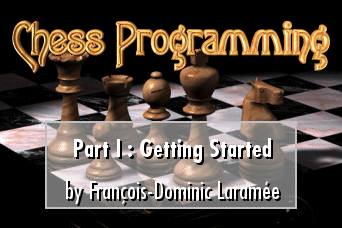11/10 - 11/12 @ Montréal, Canada
12/5 - 12/7 @ Shanghai, China
12/24 - 12/27
2/28 - 3/4 @ San Francisco, CA
More events...
2406 articles in the reference section.
Help us fight cancer!
Join SETI Team GDNet!

|
Move GenerationThe rules of the game determine which moves (if any) the side to play is allowed to make. In some games, it is easy to look at the board and determine the legal moves: for example, in tic-tac-toe, any empty square is a legal move. For chess, however, things are more complicated: each piece has its own movement rules, pawns capture diagonally and move along a file, it is illegal to leave a king in check, and the "en passant" captures, pawn promotions and castling moves require very specific conditions to be legal. In fact, it turns out that move generation is one of the most computationally expensive and complicated aspects of chess programming. Fortunately, the rules of the game allow quite a bit of pre-processing, and I will describe a set of data structures which can speed up move generation significantly. Part III of this series covers this topic.
|
|
|
|
|